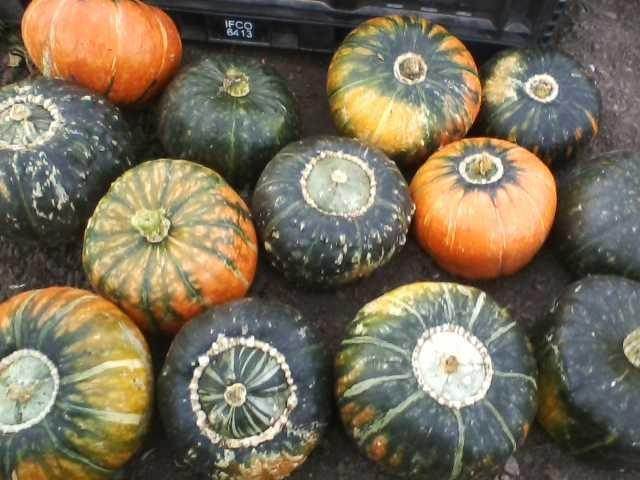
 3
3









 10
10




Gilbert Fritz wrote:why would have they specially planted "summer" types and put a lot of work into drying them?
 5
5




Western Montana gardener and botanist in zone 6a according to 2012 zone update.
Gardening on lakebed sediments with 7 inch silty clay loam topsoil, 7 inch clay accumulation layer underneath, have added sand in places.
 5
5




Creating sustainable life, beauty & food (with lots of kids and fun)




Western Montana gardener and botanist in zone 6a according to 2012 zone update.
Gardening on lakebed sediments with 7 inch silty clay loam topsoil, 7 inch clay accumulation layer underneath, have added sand in places.





 2
2




Living in Anjou , France,
For the many not for the few
http://www.permies.com/t/80/31583/projects/Permie-Pennies-France#330873




Moderator, Treatment Free Beekeepers group on Facebook.
https://www.facebook.com/groups/treatmentfreebeekeepers/





 5
5




 2
2




Western Montana gardener and botanist in zone 6a according to 2012 zone update.
Gardening on lakebed sediments with 7 inch silty clay loam topsoil, 7 inch clay accumulation layer underneath, have added sand in places.

 1
1




William Schlegel wrote:a little pile of zucchini colored lofthouse moschatas and a squash I think is a cross with a buttercup.



 2
2




Joseph Lofthouse wrote:Here's a squash photo from Buffalo Bird Woman's book. It looks to me, like she might have been growing 4 species of squash all jumbled together. Which would be conducive to making inter-species hybrids from time to time. I've marked on a photo what looks to me like typical leaves of the commonly grown squash species.
Western Montana gardener and botanist in zone 6a according to 2012 zone update.
Gardening on lakebed sediments with 7 inch silty clay loam topsoil, 7 inch clay accumulation layer underneath, have added sand in places.
 2
2




Dado
 1
1




 1
1




Mary Saunders wrote:It might have been quicker to dry summer, as less dense solids in them. Also, easier to work with. I say this because cutting a 30-pound winter can be kind of a samurai/sumo experience. I had some whopper volunteers one year. It was a job to cut them to use-size.
Western Montana gardener and botanist in zone 6a according to 2012 zone update.
Gardening on lakebed sediments with 7 inch silty clay loam topsoil, 7 inch clay accumulation layer underneath, have added sand in places.




Xisca - pics! Dry subtropical Mediterranean - My project
However loud I tell it, this is never a truth, only my experience...









 1
1




"Never doubt that a small group of thoughtful, committed citizens can change the world; indeed, it's the only thing that ever has."-Margaret Mead "The only thing worse than being blind, is having sight but no vision."-Helen Keller




Western Montana gardener and botanist in zone 6a according to 2012 zone update.
Gardening on lakebed sediments with 7 inch silty clay loam topsoil, 7 inch clay accumulation layer underneath, have added sand in places.





Gilbert Fritz wrote:In one of Carol Deppe's books, she mentioned that various groups of Native Americans would dry summer (immature) squash for the winter. It sounds like they put quite a bit of effort into this; it was not a sideline. They also grew winter squash for winter storage, and would dry the ones that didn't make it all the way to maturity.
Now, I can see growing summer squash to fill the hungry gap sooner. And drying leftovers and immature winter squash is also easy to get. But why would have they specially planted "summer" types and put a lot of work into drying them? Given hypothetical ideal conditions, a hundred square feet of summer squash can produce 36,100 calories in a summer, and a hundred square feet of winter squash can produce 63,350 calories in a summer. And those winter squash don't need the extra work of slicing and drying.
Now, it is true that I just took the hypothetical weight of squash produced and multiplied by calories per pound, ignoring any effects of the seed cavity. This would matter more for winter squash. Then again, winter squash seeds are fairly calorie dense in their own right, so they should still come out ahead.
Could this strategy be used because given a less then optimal year, the summer squash would at least produce something and the winter squash would't? A classic example of a low yielding but resilient crop alongside a high yielding but less resilient one?
List of Bryant RedHawk's Epic Soil Series Threads We love visitors, that's why we live in a secluded cabin deep in the woods. "Buzzard's Roost (Asnikiye Heca) Farm." Promoting permaculture to save our planet.




S. G. Botsford wrote:Squash hybridize like crazy. I think there are 4 groups. People who grow seeds only grow one member of each group in a season unless they have quarantine systems in place (row cover, greenhouse....)
If growing winter squash I can see preference for breeds that are small. While breaking open any winter squash is tough when raw, they are a lot easier to deal with cooked. So having a size that allowed you to cook it whole would make sense.
My own experience with winter squash is that storing whole squash in humid root cellar at 35-40F works until about February, when they go soft and moldy. Now most of the natives that did the squash and corn routine lived in a warmer climate. Could be that winter squash don't keep well.
In either case my bet is that they grew multiple types of squash, drying some for late winter, keeping some for fall, and eating some off the vine.




Whatever it takes to dodge a time clock.












 1
1




Gilbert Fritz wrote:In one of Carol Deppe's books, she mentioned that various groups of Native Americans would dry summer (immature) squash for the winter. It sounds like they put quite a bit of effort into this; it was not a sideline. They also grew winter squash for winter storage, and would dry the ones that didn't make it all the way to maturity.
Now, I can see growing summer squash to fill the hungry gap sooner. And drying leftovers and immature winter squash is also easy to get. But why would have they specially planted "summer" types and put a lot of work into drying them? Given hypothetical ideal conditions, a hundred square feet of summer squash can produce 36,100 calories in a summer, and a hundred square feet of winter squash can produce 63,350 calories in a summer. And those winter squash don't need the extra work of slicing and drying.
Now, it is true that I just took the hypothetical weight of squash produced and multiplied by calories per pound, ignoring any effects of the seed cavity. This would matter more for winter squash. Then again, winter squash seeds are fairly calorie dense in their own right, so they should still come out ahead.
Could this strategy be used because given a less then optimal year, the summer squash would at least produce something and the winter squash would't? A classic example of a low yielding but resilient crop alongside a high yielding but less resilient one?
List of Bryant RedHawk's Epic Soil Series Threads We love visitors, that's why we live in a secluded cabin deep in the woods. "Buzzard's Roost (Asnikiye Heca) Farm." Promoting permaculture to save our planet.




William Schlegel wrote:… The presumably pepo (edit I was incorrect in my presumption) Hidatsa squash landrace described in the book was actually multiple purpose and provided at least 5 food products. Squash blossoms, immature immediate eating squash, immature dried squash, winter squash, and squash seeds. …

|
This tiny ad never wears a bra
The new permaculture playing cards kickstarter is now live!
https://www.kickstarter.com/projects/paulwheaton/garden-cards
|





